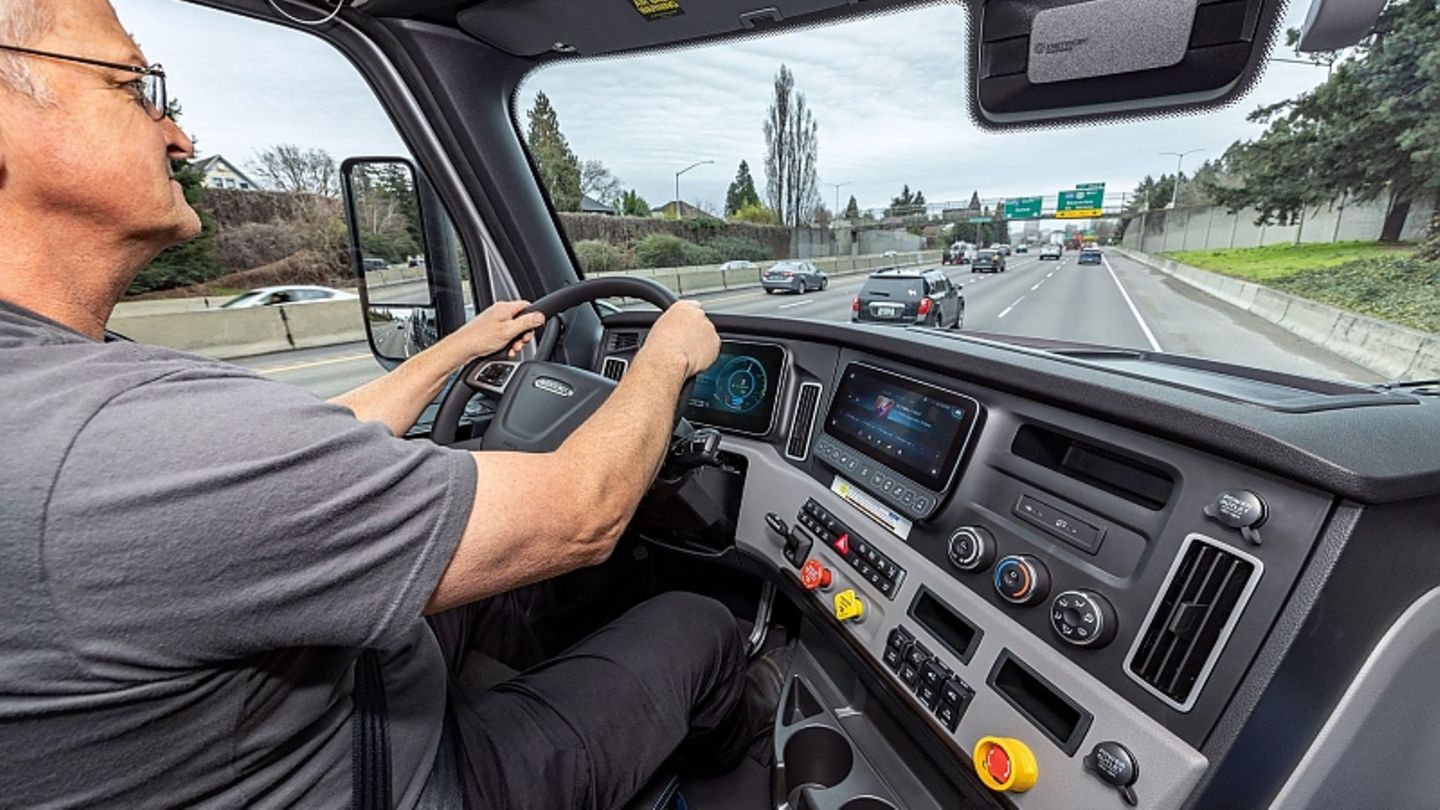The Freightliner eCascadia has a maximum range of 370 kilometers and can tow up to 37 tons. The experience of large fleet customers such as Pepsi and Ikea was incorporated into the development of the battery-powered truck.
A new era is beginning in the logistics and transport industry in the USA. Gone are the days when mighty diesel trucks were the sole kings of the highways. As with cars, electrically powered trucks are invading the habitat of the mighty alpha animals. One of the first is the Freightliner eCascadia, which will be in service on the roads between New York and Los Angeles from autumn. “To ensure that the new truck is tailored exactly to the needs of the customer, we took into account the experience of large fleet operators such as Pepsi, Ikea and Penske during development”; explains product manager Kevin Otzenberger.
At first glance, the eCascadia differs almost nothing from its conventional brothers: A powerful engine compartment combined with a large driver’s cab have always been the visual distinguishing features of American trucks from European trucks. However, with the E version of the load tractor, more emphasis was placed on aerodynamics. Technically, the eCascadia shares some things with its European counterpart, the Mercedes eActros. However, the cabling is different, since the low-voltage vehicle electrical system is operated with 24 volts in Europe and with 12 volts in the USA.
The powertrain of the eCascadia comes from the Daimler Truck North America subsidiary Detroit Powertrain. There is a choice of one or two electrically driven axles with 235 kW / 320 hp to 346 kW / 470 hp. The two types of drive can be combined with three different-sized lithium-ion NMC batteries (nickel-manganese-cobalt): 194 kilowatt hours (average charging time from zero to 100 percent: 90 to 180 minutes), 291 kilowatt hours (two to four hours) or 438 kilowatt hours (two to six hours). The prismatic cells come from the Chinese supplier CATL and can be charged up to 240 kilowatts with the CCS1 connector. The 400-volt technology is currently still installed, but the next generation of the eCascadia will probably only be on the road with 800 volts.
Depending on the configuration, the eCascadia has a range of between 155 miles (249 kilometers) and up to 230 miles (370 kilometers) if only one e-axle is installed and combined with the large battery pack. The powerful battery packs are stowed in the middle of the tractor. “The biggest challenge was accommodating the battery,” says Daimler Trucks North America Head of Technology Dr. Rainer Müller-Finkeldei. The eCascadia has two cooling circuits: one for the batteries and one for the axles or motors. The ancillary units such as the air conditioning and the air compressor are no longer driven by a belt, but electrically. They are now under the mighty bonnet.
The electric truck can transport up to 82,000 pounds (about 37 tons) of cargo. Digitization has found its way into the passenger compartment. Two LCD displays, one as a virtual instrument panel and one as the command center for the infotainment, provide the driver with all the necessary information and data.
The eCascadia is also the pioneer for the future Daimler North America trucks when it comes to the assistance systems, in which helpers such as an active lane departure warning system, which helps the driver to keep the heavy vehicle on course even in cross winds. The system also helps with tight bends and an adaptive cruise control including active emergency brake assistant relieves the driver while driving.
Source: Stern
I am a 24-year-old writer and journalist who has been working in the news industry for the past two years. I write primarily about market news, so if you’re looking for insights into what’s going on in the stock market or economic indicators, you’ve come to the right place. I also dabble in writing articles on lifestyle trends and pop culture news.




